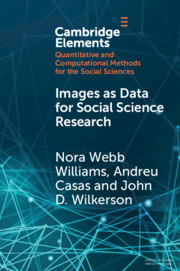Element contents
Images as Data for Social Science Research
Published online by Cambridge University Press: 17 July 2020
Summary
- Type
- Element
- Information
- Online ISBN: 9781108860741Publisher: Cambridge University PressPrint publication: 13 August 2020
References
- 43
- Cited by

